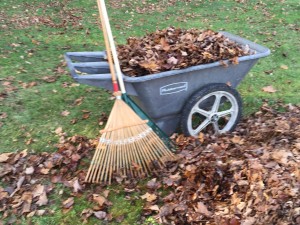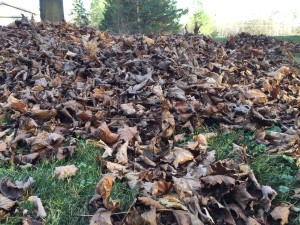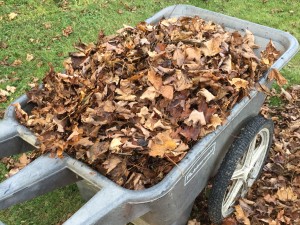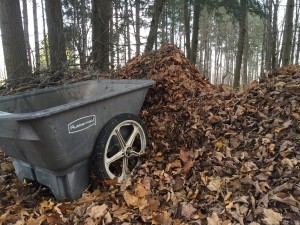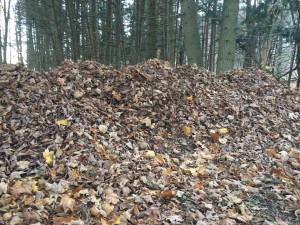We have a lot of trees on our property, including a lot of trees around the yard near the house. We like trees and they provide good shade in the summer and habitats for local wildlife.
However, this fall our yard was almost completely covered in leaves. For a good portion of the yard, by the time the trees had lost most of their leaves, the leaf cover was at least 2 inches deep.
Click continue for photos of the massive leaf compost pile.
I tried to take the quick way out and just mow over the leaves repeatedly with our riding mower to chop up / mulch the leaves. However, we don’t have mulching lawnmower blades or a mulching kit (which blocks the mower discharge area so grass and leaves recirculate back to the blades to be cut repeatedly instead of being discharged away from the mower), so driving over the leaves repeatedly did not completely chop them up. In addition, the highest mower height setting is only 4 inches, so in many places the mower simply pushed the leaves forward into piles instead of cutting them.
Here is a photo of one of the leaf piles in the yard pushed together by the mower.
After riding back and forth across the yard many times, we were left with many piles of leaves that were now too high and too thick for the mower to drive over. That means I had to resort to raking the leaves manually. I used a large wheelbarrow to haul the leaves from the yard to the woods to create a leaf compost pile.
I hauled load after load of leaves to the pile. To date, I estimate that I have hauled over 60 loads of leaves from leaf piles in the yard to the large leaf compost pile at the edge of the yard. Below is a picture of the big leaf pile after dropping off one load (with the wheelbarrow to show the scale of the pile).
Here is a picture of the full compost leaf pile as of last weekend. It is close to 5 feet tall, 5+ feet wide and over 20 feet long. The leaf pile will compress over time as the leaves decay into compost, but there will likely always be plenty of leaves to add to the pile every fall.

